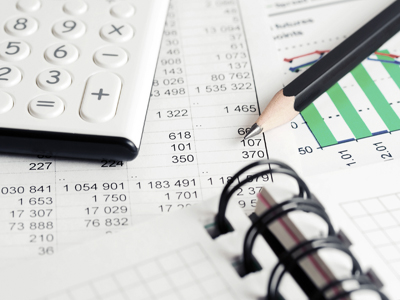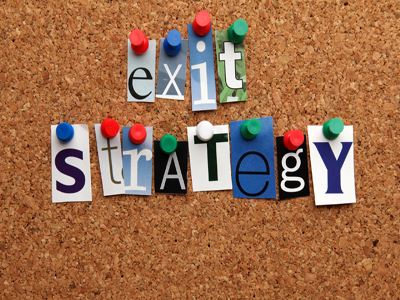Overpricing is the number one mistake sellers and their brokers make when putting businesses on the market. Even profitable, well-managed businesses can get buried under a bad number. Brian Loring (Los Angeles County Business Broker) discusses "the tangible trap" and how to avoid it when selling.

Comments & Feedback From Pro Intermediaries & Pro Advisors On BizBen:

Overpricing is the number one mistake sellers and their brokers make when putting businesses on the market. Even profitable, well-managed businesses can get buried under a bad number.
One of the chief culprits in over-estimating value is what I call "The Tangible Trap." I find a lot of business owners misunderstand how their tangible assets impact value. Specifically, their equipment and tenant improvements. As a broker, it's often disheartening to show owners how these tangible assets don't provide as much bang for the buck as they'd hoped.
Months ago, I was working with a restaurant owner who had not turned a profit in any of his four years of operation. In that period, he had spent roughly $300K in improving and building out the restaurant space, another $100K in expanding his outdoor patio, and roughly $80K over the years in upgrading his kitchen equipment, freezers and fridges. To make matters worse, he had just one year left on a 5-year lease, with no options and a poor working relationship with the landlord.
He shared a common false presumption. He anticipated that potential buyers would see all the dollars that had been spent on the buildout and they'd look past the intrinsic flaws in his operation. In his mind, he'd spent half a million bucks on this restaurant and these investments made his business worth at least $350K or more.
He was gracious and professional when I explained that my opinion of value was nowhere close to what he hoped. But he wasn't coming down from his lofty price expectations. And he wasn't going to hire me either.
Small business valuations typically combine the Income, Asset and Market Approaches to reach opinions of value. The most favored method seeks to approximate the value of a business by applying a multiple to the discretionary cash flow. This seller's discretionary earnings (SDE) figure is multiplied by a factor that considers industry type, market conditions, competition levels and indicators unique within their business categories.
Here's what many owners struggle to understand. When they are told their business could net a sale price of 2.5x net earnings, they often want to add the cost of their tenant improvements and tangible assets on top of that calculation. Or they believe their tangible assets are far superior and more valuable.
But your equipment and TI's are generally baked into that multiplier already. Say you had a liquor store and a textile manufacturer who showed the same gross revenues, same net income and had identical balance sheets. An appraiser would still use a far higher multiplier for the manufacturer than the liquor store. It would not be uncommon for the liquor store to be valued at less than 2x SDE (inventory aside) while the manufacturer is valued at 4x SDE. Why?
The difference in multipliers is grounded in many value factors - the assignment of risk, strength of industry, lender favorability, workforce expertise, depreciation timeframes, equity investment desirability, plus many other longstanding conditions. A huge part of the multiplier disparity involves the typical forms of equipment and tenant improvements involved in particular industries. That's why the multipliers are sometimes arbitrary, but still often accurate, yardsticks for estimating what a buyer may pay.
My restaurant owner made the mistake in believing he could simply add $250K-$300K as a raw figure representing the fair market value of his equipment and TI's, to offset his negative cash flow and reach a favorable value conclusion. He never put his restaurant on the market. He wound up getting a considerable amount of money in an asset sale of his equipment, furniture and other tangibles, plus a separate sale price for his recipes.
Every business has its own unique value drivers. Highly-improved businesses will indeed net higher prices than modestly-equipped companies, all else equal. Putting numbers to your tangible assets can be tricky, so I'd certainly recommend professional input. Just don't be surprised if that expert tells you that a sizable chunk of your tangible asset investment is not recoverable.

 The worst thing to do is overprice a business, especially in the honeymoon period or right when you start advertising it. If the price and terms are off at the beginning of the advertising, it could later bring in a lower than normal purchase price, because of stagnation while it sat on the market.
The worst thing to do is overprice a business, especially in the honeymoon period or right when you start advertising it. If the price and terms are off at the beginning of the advertising, it could later bring in a lower than normal purchase price, because of stagnation while it sat on the market.
 Brian is absolutely right. Over-pricing a business creates false expectations in the seller and a sense of incredulity in the buyer. It impedes serious consideration by the market, and makes it difficult to later come back to market with a substantially lower price: potential buyers want to to know what happened to the business to make it now "less valuable."
Brian is absolutely right. Over-pricing a business creates false expectations in the seller and a sense of incredulity in the buyer. It impedes serious consideration by the market, and makes it difficult to later come back to market with a substantially lower price: potential buyers want to to know what happened to the business to make it now "less valuable."
McGovern Escrow Services, Inc., is a leading independent escrow company. We are a trusted partner with our clients, assisting them through the tangled bulk sale & liquor license transfer process. We provide attentive, quality & innovative customer service. Phone Elizabeth McGovern at 415-735-3645.
ServingSan Francisco Bay Area, North Bay, Central Valley
The Veld Group provides a refreshing approach to Business Brokerage, Mergers & Acquisitions and Business Consulting and Valuations. From Your Street to Wall Street, we cater to Main Street Businesses as well as more complex Strategic Firms and Start-Ups.
ServingSouthern California
Cheryl's a restaurant business broker, over 25 years in the bar and restaurant industry coupled with a J.D. Cheryl works tirelessly to create successful strategies and effective negotiations for those who wish to purchase a new or sell an existing bar, restaurant, cafe, or night club. 415-309-2722
ServingCity Of San Francisco
Laundry consulting, due diligence, buyer representation: We preview laundries for you and evaluate them. 28 years laundry industry experience: buying, selling, valuing, retooling, analyzing, consulting services for laundry buyers and entrepreneurs in California. Contact us today about our services.
ServingSouthern California
I am an experienced entrepreneur, attorney, & business professor. I & my EvergreenGold® team offer business owners sound advice & expertise to build business value & achieve profitable sales. Call me today for a business evaluation & SWOT analysis for your business anywhere in the USA.
ServingNationwide
I am the Founder Of BizBen.com. I consult daily with intermediaries, business buyers, owner/sellers & advisors daily about buying and selling California small to mid-sized businesses. Contact me today about joining & utilizing BizBen, consultations, & advisory services.
ServingNationwide - All Areas
For over 25 years Peter Siegel, MBA has been providing niche business purchase financial advisory and loan placement services with SBA Loans, Non SBA Financing, Retirement Plan Conversions, Note Restructures, etc. Call me regarding business purchase financing and to get pre-qualified: 925-785-3118.
ServingNationwide - All Areas
If your business involves alcoholic beverage sales, we can help. Obtaining a liquor license transfer or selling a business with a license in California does not have to be a frustrating and overwhelming process. We have procured thousands of licenses for our clients.
ServingAll Of California

Laundromats and coin operated Laundromats are popular choices among business buyers as they often can be successfully run as an absentee run business. You need to be strategic about when you sell your Laundromat so you don't get taken to the cleaners by a buyer and so that you maximize your profits.

Buying a professional service business, like a dental practice, is one of the most profitable ventures you can enter into if you are considering becoming a small business owner. In this blog, Peter Siegel, MBA discusses six things you need to know about buying a successful dental practice or office.

Chuck Post a laundry consultant, specialty broker, buyer representative & due diligence advisor starts this discussion on why it's important to have an exit strategy in mind while buying a laundromat! He & others explain why this concept is so important for buyers especially in the laundry business.

Buying a liquor store can present some major challenges to business buyers - a recent client on the BizBen ProBuy Program relates to Peter Siegel, MBA what the major challenges may be when searching for and buying a Californa liquor store business. I welcome other Advisors to weigh in on this topic.

Sometimes business brokers just can't win with their clients, because if an offer comes in too fast & too early then they must have lowballed the price & the seller is suspicious, and if not enough offers come in after putting the business on the market - they may look unproductive to their clients.

